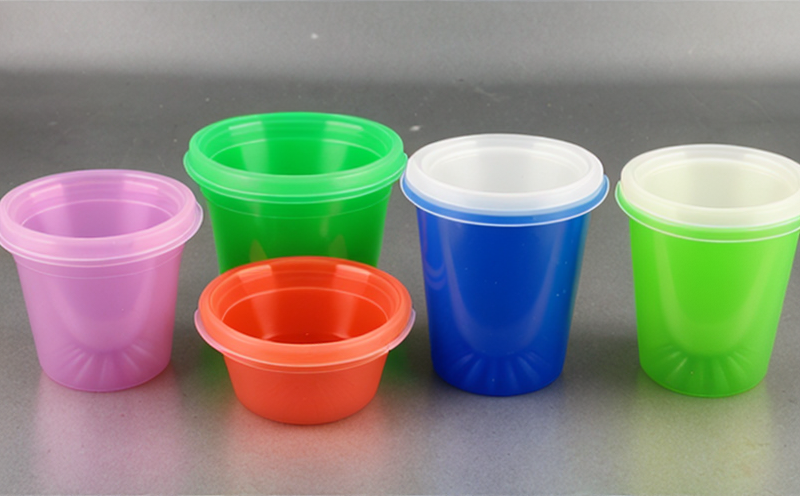ASTM F2054 Burst Strength Testing of Disposable Plastic Packages
The ASTM F2054 standard provides a robust framework for evaluating the burst strength of disposable plastic packages, which is critical in ensuring product integrity and safety. This test is particularly important as it helps to guarantee that packages can withstand the pressures encountered during manufacturing, handling, shipping, and storage without compromising the sealed contents or causing leaks.
Burst testing is a fundamental part of quality control processes for medical device packaging, food containers, and other disposable plastic items used in various industries. It ensures that the package design meets regulatory requirements and customer expectations regarding durability and leak prevention. For instance, in the healthcare sector, the integrity of surgical packs is paramount to prevent contamination or damage to sterile contents.
The test involves subjecting a sample to increasing pressure until it fails due to rupture. The burst strength measured during this process indicates how much force the package can withstand before failure occurs. This information is invaluable for developers and manufacturers who need to ensure their products meet industry standards, such as those set by ISO or ASTM.
ASTM F2054 defines a specific procedure that ensures accurate and consistent results across different laboratories. The testing apparatus typically includes a pressure chamber capable of applying controlled increments of hydrostatic pressure. Specimens are carefully prepared according to the standard’s guidelines, which specify dimensions, shape, and orientation for optimal testing.
The test is crucial in various industries, including medical device manufacturing, pharmaceutical packaging, food safety, and consumer goods. In each case, ensuring that disposable plastic packages can withstand the pressures they encounter during their lifecycle is essential. For example, in the medical field, failure of a package could lead to contamination or damage to sterile products.
Understanding the burst strength of these packages helps manufacturers optimize material selection, design, and manufacturing processes. By adhering to ASTM F2054, laboratories can provide reliable data that supports informed decision-making throughout the product lifecycle.
Why It Matters
The importance of ASTM F2054 burst strength testing extends beyond mere compliance with industry standards; it plays a vital role in ensuring consumer safety and satisfaction. Failure to meet these requirements can lead to numerous issues, including contamination, leakage, or compromised product integrity.
Medical devices: Ensuring that surgical packs remain sterile during transport is critical for patient safety.
Foods and beverages: Preventing leaks in packaging helps maintain the quality and safety of perishable goods.
Consumer products: Reliable packaging protects delicate items from damage, enhancing customer trust and satisfaction.
In addition to these practical benefits, rigorous testing also supports continuous improvement in product design and manufacturing processes. By identifying weak points early in the development cycle, manufacturers can refine their packages for better performance and durability. This proactive approach not only enhances product quality but also reduces costs associated with recalls or consumer complaints.
Scope and Methodology
| Key Components | Description |
|---|---|
| Test Specimen Preparation | The specimen should be cut from a single layer of the material to ensure consistency. Dimensions are specified in ASTM F2054. |
| Pressure Application | The pressure is increased gradually until failure occurs, with readings taken at regular intervals for precise measurement. |
| Data Collection and Analysis | All relevant data points are recorded and analyzed to determine the burst strength of each specimen. |
The ASTM F2054 standard provides detailed instructions on how to prepare specimens, apply pressure, and record results. Compliance with these procedures ensures accurate and reliable testing outcomes that can be trusted across different laboratories.
Quality and Reliability Assurance
Use of certified apparatus: Ensures consistent and repeatable test conditions.
Training of personnel: Ensures adherence to standardized procedures.
Precision instruments: High-precision equipment is essential for accurate measurements.
Digital data recording: Accurate and reliable data management supports consistent quality control.
The laboratory adheres strictly to ASTM F2054, ensuring that all tests are conducted under controlled conditions. This commitment to quality guarantees that the results obtained are accurate and can be relied upon by clients for regulatory submissions or internal decision-making processes.





